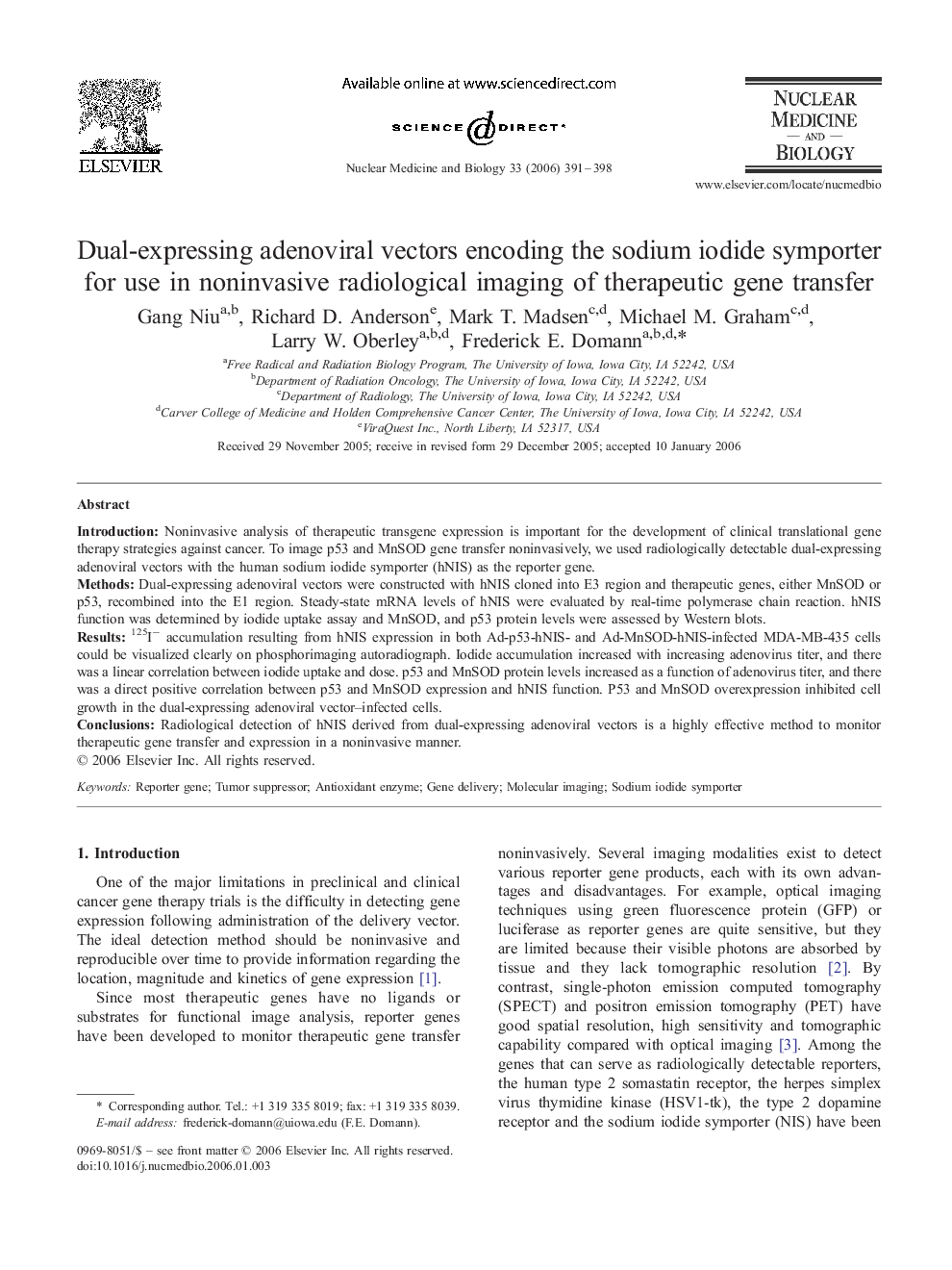| Article ID | Journal | Published Year | Pages | File Type |
|---|---|---|---|---|
| 2154867 | Nuclear Medicine and Biology | 2006 | 8 Pages |
IntroductionNoninvasive analysis of therapeutic transgene expression is important for the development of clinical translational gene therapy strategies against cancer. To image p53 and MnSOD gene transfer noninvasively, we used radiologically detectable dual-expressing adenoviral vectors with the human sodium iodide symporter (hNIS) as the reporter gene.MethodsDual-expressing adenoviral vectors were constructed with hNIS cloned into E3 region and therapeutic genes, either MnSOD or p53, recombined into the E1 region. Steady-state mRNA levels of hNIS were evaluated by real-time polymerase chain reaction. hNIS function was determined by iodide uptake assay and MnSOD, and p53 protein levels were assessed by Western blots.Results125I− accumulation resulting from hNIS expression in both Ad-p53-hNIS- and Ad-MnSOD-hNIS-infected MDA-MB-435 cells could be visualized clearly on phosphorimaging autoradiograph. Iodide accumulation increased with increasing adenovirus titer, and there was a linear correlation between iodide uptake and dose. p53 and MnSOD protein levels increased as a function of adenovirus titer, and there was a direct positive correlation between p53 and MnSOD expression and hNIS function. P53 and MnSOD overexpression inhibited cell growth in the dual-expressing adenoviral vector–infected cells.ConclusionsRadiological detection of hNIS derived from dual-expressing adenoviral vectors is a highly effective method to monitor therapeutic gene transfer and expression in a noninvasive manner.
